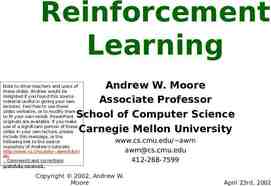Famous People in the Field of Nuclear Science (briefing courtesy
25 Slides1.89 MB
Famous People in the Field of Nuclear Science (briefing courtesy of North Anna Nuclear Power Station)
Marie Curie (1867-1934)
Marie Curie (1867-1934) Polish physicist, in 1898, named the emissions (alpha & beta) from uranium radioactivity Discovered the chemical elements radium and polonium worked with cloud chambers and magnetic fields to bend radiation.
Marie Curie (1867-1934) Shared the 1903 Nobel Prize in physics with her husband (Pierre) and Becquerel First Woman to receive Nobel Prize In 1911 she received an unprecedented second Nobel Prize, this time in chemistry, for her work on radium and radium compounds.
Ernest Rutherford (18711937)
Ernest Rutherford (18711937) In 1911, Rutherford established the nuclear model of the atom. He theorized that atoms are constructed much like the solar system. That is, a heavy part, called the nucleus, forms the center. Particles of negative electricity, called electrons, form the outer part, most of which consists of empty space.
Ernest Rutherford (18711937)
Ernest Rutherford (18711937) "It was as incredible as if you fired a 15-inch shell at a piece of tissue paper and it came back and hit you."
Ernest Rutherford (18711937)
Albert Einstein (1879-1955)
Albert Einstein (1879-1955) 1905, produced the theory of relativity (E mc2) This resulted in the shocking conclusion that time depends on the observer. When moving at high speeds Effective mass increases Time slows Length shrinks only the speed of light remains the same.
Albert Einstein (1879-1955) Experimenters have carried extremely accurate atomic clocks on high-speed jets on around-theworld journeys. And when they compared these clocks to the extremely accurate clocks they left at home, the traveling clock had indeed gone slower and lost time. But by very little.
Albert Einstein (1879-1955) received the 1921 Nobel Prize for work in mathematical physics & stating the law of the Photoelectric Effect Einstein proposed that under certain circumstances light can be considered as consisting of particles Also hypothesized that the energy carried by any light particle, called a photon, is proportional to the frequency of the radiation
Ernest Lawrence (1901-1958)
Ernest Lawrence (1901-1958) an American physicist worked with particle accelerators A machine that accelerates atomic particles between poles of an electromagnet and directs them into material These accelerators have produced many of the elements beyond uranium.
Ernest Lawrence (19011958) Also, these machines have greatly enhanced the capacity to produce radioactive substances. Received the 1939 Nobel Prize for creating the Cyclotron accelerator
Cyclotron Accelerator
Enrico Fermi (1901-1954)
Enrico Fermi (1901-1954) An Italian-born American physicist began bombarding elements with neutrons in 1934 In 1938, He came to America to escape the Fascist regime Created theory of beta decay Theory on the origin of cosmic rays
Enrico Fermi (1901-1954) designed the first atomic pile and produced the first nuclear chain reaction on Dec. 2, 1942 (birth of the reactor) Reactor under the football stands of the University of Chicago
First Atomic Pile
Glenn Seaborg (1912-1999) QuickTime and a TIFF (Uncompressed) decompressor are needed to see this picture.
Glenn Seaborg Co-discovered Plutonium and 9 other elements Element 106 - Seaborgium named after him Only living person to have element named after him Identified more than 100 isotopes Figured out how transuranium elements fit in the periodic table Identified medical isotopes - saved his mother’s life with discovery of Iodine-131
THE END Famous People Session for Nuclear Science Merit Badge






























